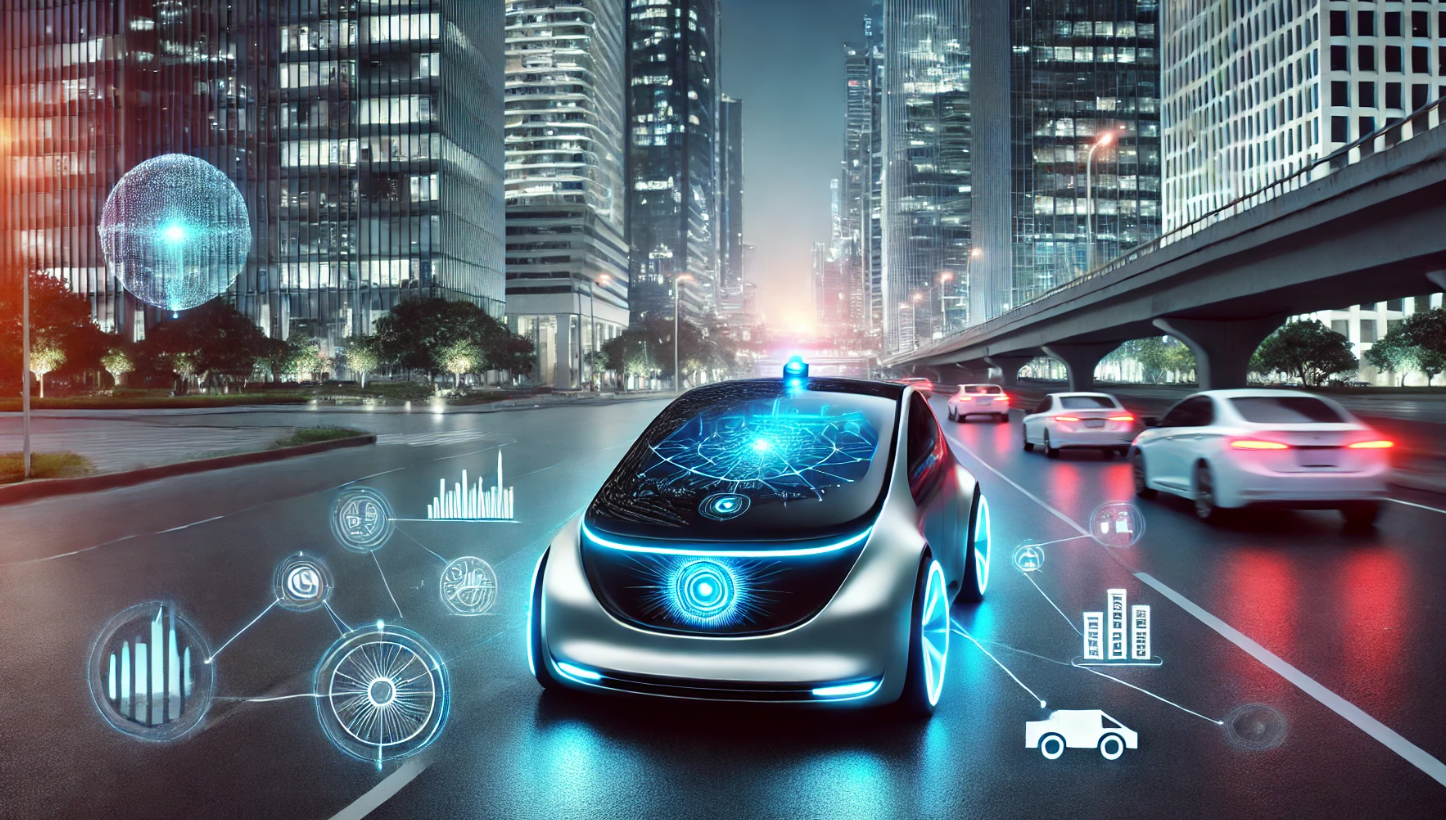AI’s Role in Modern Vehicles
The integration of artificial intelligence (AI) into the automotive industry has brought unprecedented changes, making vehicles safer, smarter, and more efficient. Once merely a dream of science fiction, intelligent cars now enhance driving experiences and redefine mobility. This article explores the evolution of automotive AI, its applications, and the challenges it faces.
The Foundations of Automotive AI
AI in cars relies on machine learning (ML), computer vision, and neural networks. These technologies analyze vast amounts of data from sensors, cameras, and vehicle systems to improve decision-making and automate processes. Early automotive AI began with simple systems like cruise control, but today, advanced AI enables autonomy and personalization.
Autonomous Driving: The Ultimate AI Challenge
Autonomous driving represents the pinnacle of AI in vehicles. Self-driving cars depend on complex systems that combine several AI disciplines:
- Perception: Using LiDAR, radar, and cameras, AI detects objects, traffic signals, and pedestrians.
- Decision-Making: Neural networks process environmental data to determine actions like stopping, accelerating, or turning.
- Navigation: Algorithms integrate GPS and mapping data to chart optimal routes.
Companies like Tesla, Waymo, and Mercedes-Benz have made significant progress, with vehicles achieving Level 2-3 autonomy (partial self-driving). Full autonomy (Level 5) remains a work in progress due to technical and regulatory barriers.
AI-Driven Safety Systems
Modern vehicles incorporate AI to enhance safety through features such as:
- Advanced Driver Assistance Systems (ADAS): Technologies like lane-keeping assist, adaptive cruise control, and emergency braking are powered by AI.
- Collision Avoidance: AI predicts potential accidents using sensor data and mitigates risks.
- Driver Monitoring: Cameras track eye movements and posture to detect fatigue or distraction, alerting the driver in real time.
These systems have significantly reduced accidents, saving lives and minimizing injuries.
The Rise of Intelligent Cockpits
AI-driven smart cockpits are reshaping the way drivers interact with their vehicles. Features include:
- Voice Assistants: AI-powered systems like Amazon Alexa and Google Assistant provide hands-free control over navigation, entertainment, and climate settings.
- Personalization: AI learns driver habits, adjusting seat positions, playlists, and preferred routes.
- Augmented Reality Displays: Advanced heads-up displays (HUDs) overlay navigation and hazard information on the windshield for a seamless experience.
Such innovations enhance convenience and make driving more enjoyable.
Predictive Maintenance: The Future of Car Care
Traditional maintenance relies on scheduled servicing or visible problems. AI revolutionizes this process with predictive maintenance. By analyzing data from sensors and onboard diagnostics, AI predicts potential issues before they occur, reducing downtime and repair costs. Examples include:
- Identifying engine anomalies through vibration patterns.
- Monitoring tire pressure and wear in real time.
- Sending alerts for fluid replacements or battery health.
Predictive maintenance ensures vehicles remain efficient and reliable over time.
AI in Fleet Management
Beyond individual vehicles, AI optimizes fleet management for logistics companies. Key benefits include:
- Route Optimization: AI reduces fuel consumption and delivery times by analyzing traffic and road conditions.
- Driver Behavior Monitoring: AI tracks driving patterns, promoting safer practices.
- Energy Efficiency: Electric vehicle fleets use AI to manage battery charging schedules, extending range and minimizing costs.
Fleet-wide AI adoption improves operational efficiency and sustainability.
Ethical and Legal Challenges of AI in Cars
The implementation of AI in vehicles raises important ethical and legal questions. For instance:
- Decision Dilemmas: In unavoidable accidents, how should AI prioritize outcomes?
- Liability: Determining responsibility for crashes involving autonomous vehicles is complex.
- Data Privacy: Vehicles collect vast amounts of user data, necessitating robust cybersecurity measures.
Resolving these challenges requires collaboration between engineers, regulators, and ethicists.
Environmental Impact of AI
While AI enhances vehicle functionality, it also supports sustainability. AI improves fuel efficiency by optimizing driving patterns and promoting eco-friendly behaviors. In electric vehicles (EVs), AI manages battery life and charging, enabling smarter energy usage. Additionally, autonomous electric fleets have the potential to reduce carbon emissions significantly.
The Road Ahead: Future Trends in Automotive AI
The evolution of automotive AI is far from complete. Future developments may include:
- Vehicle-to-Everything (V2X) Communication: Cars will interact with infrastructure, other vehicles, and pedestrians for seamless traffic flow.
- Enhanced Autonomy: Level 5 self-driving cars could become a reality, enabling complete driverless operation.
- AI-Powered Manufacturing: AI streamlines production processes, ensuring higher quality and reduced waste.
As AI advances, its role in transportation will continue to expand, shaping the future of mobility.
Conclusion: A Smarter, Safer Journey Ahead
AI has transformed vehicles into intelligent machines that adapt, learn, and assist. From self-driving technology to predictive maintenance, AI offers safer roads, personalized experiences, and environmental benefits. While challenges remain, the potential of automotive AI is limitless. The journey to fully autonomous, intelligent vehicles promises to redefine how we drive and live.


